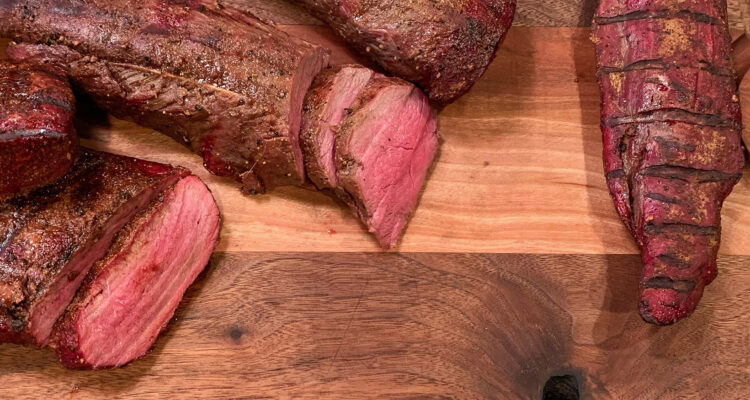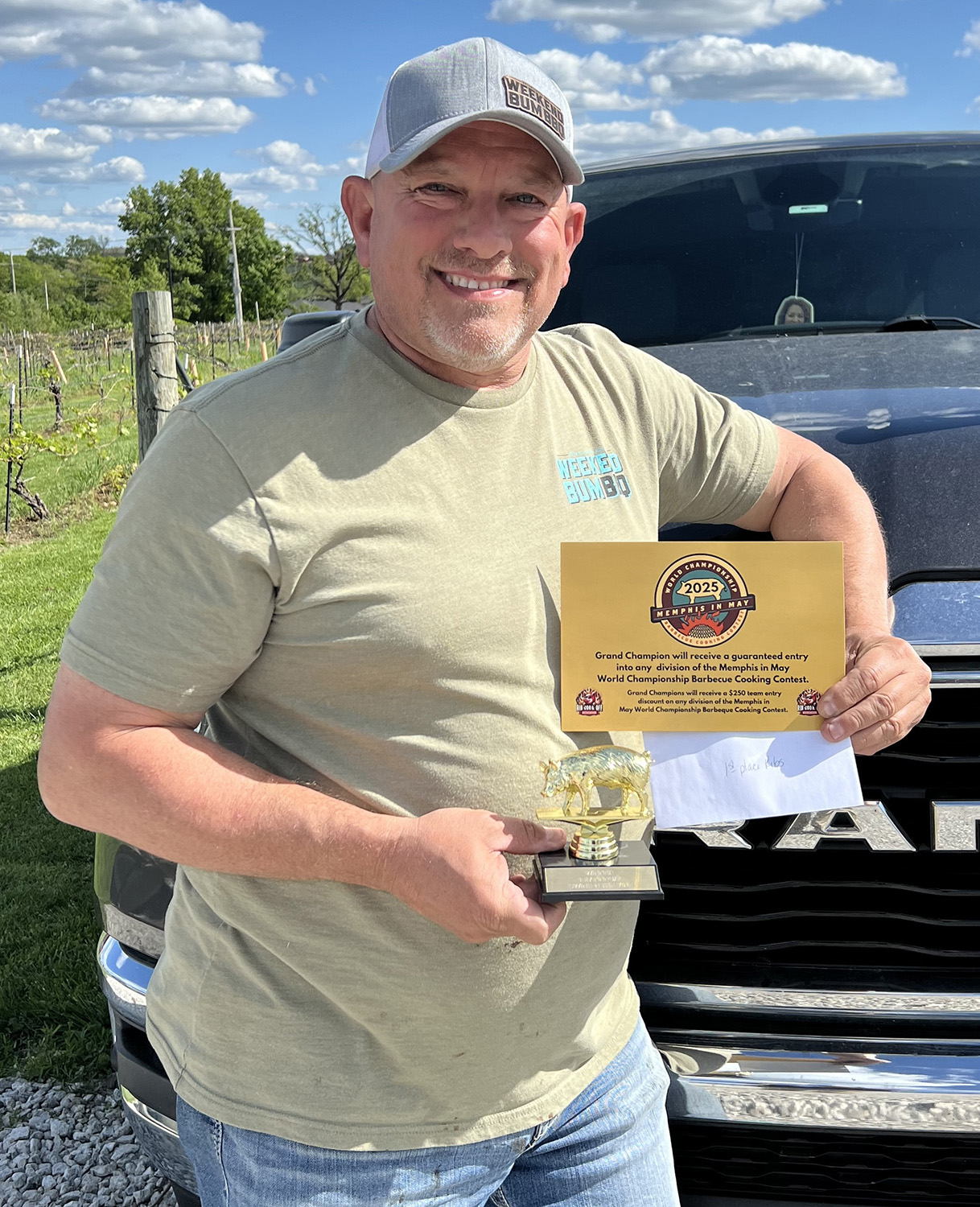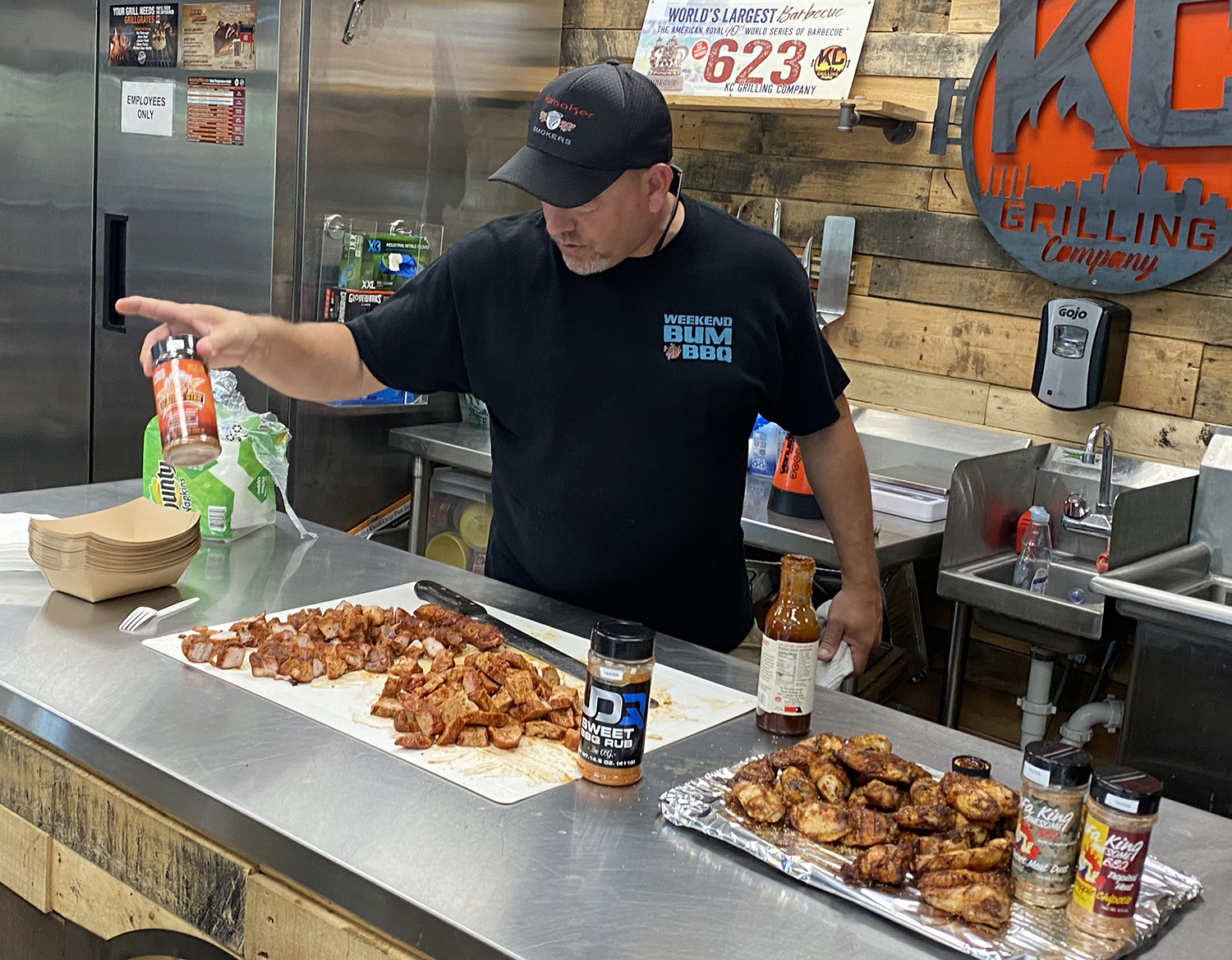Get some tips for grilling and smoking success from one of the best!
Story by Dave Eckert / Photos courtesy of Weekend Bum BBQ
The joke in my hometown of Chicago is that it has two seasons – winter and construction. I’ve adapted that joke to the city where I’ve lived for nearly half of my life like this. Kansas City has two seasons – winter and barbecue. Of course, every Kansas Citian worth his or her salt, knows the difference between barbecue and grilling, but for the purpose of this article, I’ve included insights into both from Kevin Heese, master smoker and griller, and creator of Weekend Bum BBQ.
KCH&S: Describe what you consider to be the difference(s) between grilling and barbecuing?
Heese: Grilling is always over high heat and a fast cook: steaks, burgers, vegetables, whatever. Barbecuing is smoking, typically at a lower heat, but can have temps close to the lower end of grilling. When barbecuing, you’re looking to break down fatty connective tissues, as well as adding the flavor of smoke to what you’re cooking.
KCH&S: What is your favorite method to achieve success in smoking, and in turn, your recommendations for grilling that perfect protein?
Heese: I feel the best way to achieve success in smoking food is to prepare and practice. There are more steps to smoking, so having the process written down and everything prepped and ready to go will help ensure success. Also, like anything else, practicing as often as you can will produce better results. I prefer smoking over hardwood lump charcoal. When grilling, you will be at a higher heat, but start on the low end. You can always turn up the heat. Making sure you have clean grates, then apply a good high-temp oil like avocado oil to them will ensure your protein doesn’t burn and can be turned over easily.
KCH&S: How do you feel about sauces in smoking and grilling? When, how, and why do you decide to apply them, if you decide to do that?
Heese: I prefer to use sauce as a side to complement the meat. I want to taste what was created and enjoy the hard work that went into it. Don’t get me wrong, I love a good grilled chicken breast with some char with a light coat of spicy BBQ sauce. But, if you aren’t careful while cooking with sauced proteins, they can burn. Sugar burns easily and that isn’t a good taste.
KCH&S: Weekend Bum has several different rubs. How should a griller or smoker decide which rub to use and why?
Heese: We have three rubs/seasonings: Perfect Perfect All Purpose, it’s great for chicken, pork, vegetables, eggs, and has won some awards for beef as well! Hot Bum Spicy, perfect for when you want to add a little heat. It won’t burn your tastebuds but will add a pop of heat. Finally, O.G. Bum. This is my newest creation. It’s full of complex flavor profile and works great on chicken, pork, ribs, and brisket. There’s also a restaurant in Oklahoma that uses O.G. Bum as a fry seasoning and in their coleslaw! In the end, play with flavors, combine them, and find what you like.
KCH&S: Do you ever marinate as opposed to applying a dry rub, or even both? And, if so, how long should the protein rest in the rub or marinade?
Heese: I will marinate and/or brine, mostly with poultry. This helps ensure your poultry doesn’t dry out, but it’s also a great way to impart flavor into the meat as well. I’d say two to four hours is plenty of time for a brine or marinade, depending on what you are preparing. I do like to marinate pork chops since they are often very lean.
KCH&S: Lastly, and I think this is the trickiest thing for the home grilling or smoker, when dealing with fish, or seafood in general (shrimp, scallops, crab, etc.), what methods do you recommend for the best results?
Heese: When cooking any fish/seafood protein the biggest factor is a clean cooking surface. First, grates and griddles should be free of any cooking debris. Second, preheating your cooker is essential. Let it come up to temp ahead of time. Fish/seafood cooks quickly. A clean cooking surface and a pre-heated grill will help make it easy to turn as needed and get a great surface to the protein.









